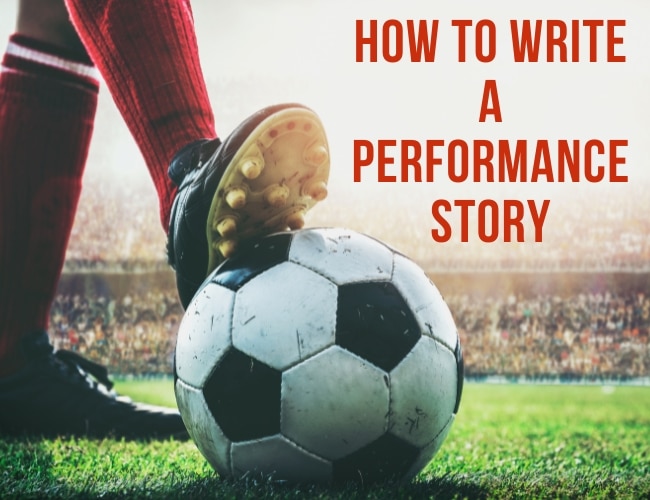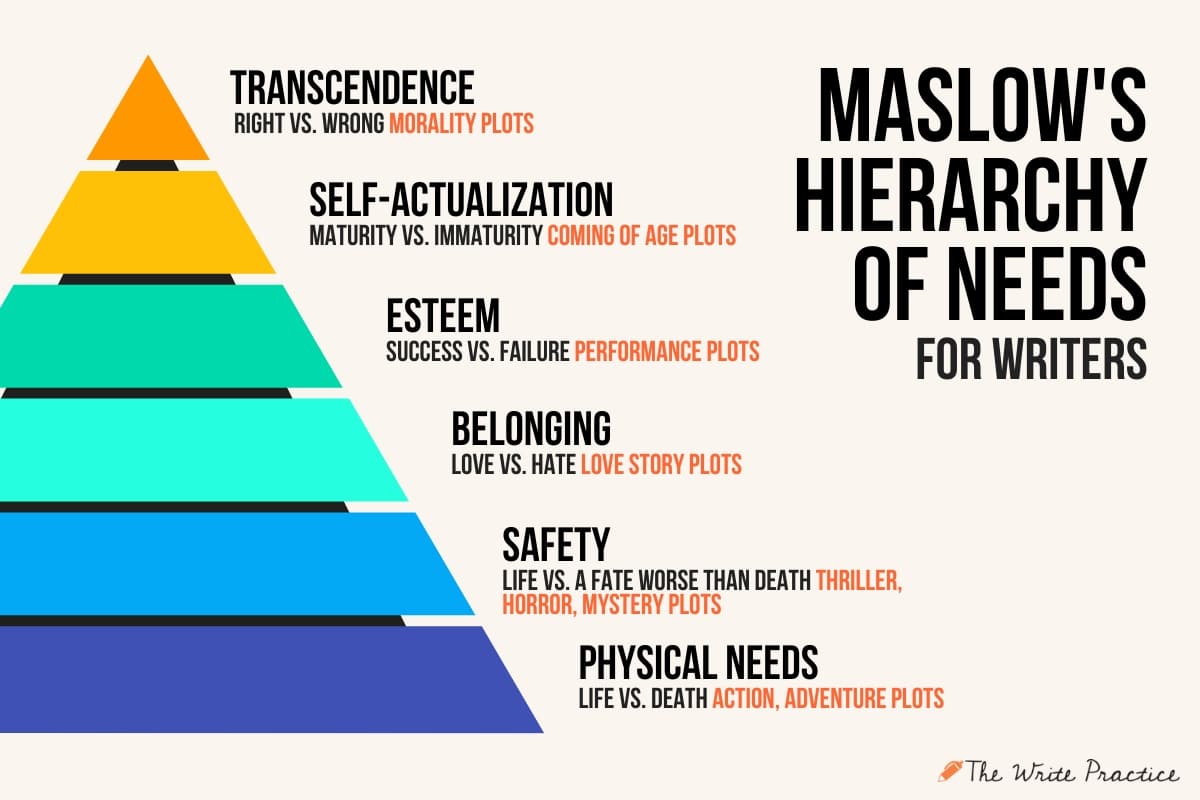Performance or sports stories are one of the most inspiring story types. Full of passion and determination, the characters in performance stories strive against all odds to achieve their goals and earn the respect of those around them. Today, we're going to explore how to write a performance story that has your reader cheering.

What is a Performance Story?
In performance or sports stories, a protagonist (along with their team, if they have one) will prepare for some kind of competition. This may be a traditional competition or tournament, such as in The Queen’s Gambit, or it may be some other important performance, such as a concert, an entrance exam for a prestigious academy, or even a duel.
The competition could be for any type of art or sport, from dancing, to singing, to playing soccer, and more. The protagonist will then spend the story working toward succeeding in this competition, as well as earning the respect and admiration of their community and peers. The story value is therefore esteem, or success vs. failure.
Value Type
Each of the ten story types we’ve looked at in this series (check out our full guide here) is based on a specific value scale, as you can see in the diagram below:

- Survival from Nature > Life vs. Death
- Survival from Others > Life vs. Fate Worse than Death
- Love/Community > Love vs. Hate
- Esteem > Accomplishment vs. Failure
- Personal Growth > Maturity vs. Immaturity
- Transcendence > Right vs. Wrong
These story types are not restricted to genre; so, for example, you could have a performance horror story, performance morality story, performance science fiction story, performance action story, or performance romance story. You just need to ensure your performance story is driven by this esteem story value.
Success vs. Failure
In performance/sports stories, the value type is success vs. failure. This is an external conflict source, where the protagonist has a specific performance goal or competition they wish to succeed in.
By winning, they’ll gain the respect and applause of their community, teammates, or from other people they value. And by losing, they'll not only miss out on the trophy (or its equivalent), they'll also lose the esteem they desperately want. They'll do almost anything to avoid this.
Not sure what your story's plot type is? Take our free plot type test here.
Story Structure and Obligatory Scenes
A performance/sports story will kick off with the protagonist entering a tournament, competition, or event in the inciting incident. Although this competition is often significant, it doesn’t need to be a formal tournament. As we discussed above, it could also be a performance goal, like an audition or an important concert.
The story will follow the main character as they face various hurdles that threaten their success in this competition. Protagonists will often fail early in the story, shaking their confidence but ultimately making them more determined to win. Failing may even make them become (or reinforce their status as) an underdog in the competition.
The protagonist will then finally compete at the big tournament in the climax, usually against a specific rival. There, they will either win or lose—both the trophy and the esteem they crave.
Some other conventions commonly found in performance stories are:
- A coach or mentor that teaches, inspires, and sometimes deals out tough love.
- A rival that puts the protagonist through their paces.
- Training scenes that highlight the protagonist’s diligence and determination, sometimes in the form of a montage.
- Strong, highly ambitious personalities with compelling backstories.
Tips on How to Write a Performance Story
Do your research
Some of your readers will be drawn to your story because of the type of art or sport you’re writing about, and may even be experienced performers themselves. Make sure you’ve done your research so you can accurately portray not only the sport or art but also how the competitions are run, the terminology competitors use, common fears in the sport/art, and even slang words. Nothing will take your reader out of your story faster than an unrealistic depiction of the art or sport they love.
On the other hand, some of your readers will also have no knowledge about your art or sport. Explain the different terms you and your characters use, so that anyone can enjoy your story, whether they're a beginner or expert.
Authenticity is so important in a performance/sports story, so cover all your bases (no pun intended!).
Atmosphere and Setting
Competitions have an electric, exciting, nail-biting atmosphere. They’re also full of unique sights, sounds, and even smells that readers want to experience as well.
Capture your protagonist's world with vibrant, descriptive language that's full of sensory details, especially during the climax when they’re at the competition or tournament.
Suspense
Don’t make things too easy for your protagonist. You want to find the sweet spot where your reader is rooting for your character to win, but doesn’t feel like it’s a foregone conclusion (and stop reading, as a result). Show your character’s struggle to succeed, so that when they finally do reach the competition, your reader is eagerly turning each page to find out what happens next!
Journey
Though performance stories are primarily driven by external conflict—success vs. failure—that doesn’t mean you can neglect your main character’s internal journey. Performance stories often have a personal growth subplot, where the protagonist learns and changes from the experiences they go through to compete.
Their character development is, therefore, just as important as their achievements. Show us where they start, their struggles to get where they want to go, the pressure they’re under, and what they learn from winning or losing. Give them a compelling backstory that drives them forward (or tries to hold them back).
Your reader wants to connect with your character and might even see themselves in your protagonist too. So don’t just show us how your character gets the gold—show us how they grow as a person as well.
Famous Examples
Some famous performance stories include:
- The Boys in the Boat by Daniel James Brown
- The Queen’s Gambit by Walter Tevis
- Miracle (film)
- Ghost by Jason Reynolds
- Hamilton (musical)
It’s often said that the best writers are readers as well. If you’re interested in writing a captivating performance story, I strongly encourage you to read as many examples as you can and see what works for you as a reader. You can then use that knowledge to craft your own award-winning performance story.
Success vs. Failure
To write a successful performance story, the most important thing to remember is the esteem story value. Make sure your character cares deeply about winning, even if they don’t end up winning in the end. Their passion—not only for success, but for their art or sport as well—should drive the story, and perhaps even inspire your readers as well.
Want to write your own performance story? Get started with our 20 Crowd-Pleasing Performance Story Ideas here!
What's your favorite performance story? Let us know in the comments!
PRACTICE
Set the timer for 15 minutes. Write a scene with a make-or-break moment for your character. This could be the central event or tournament, a crucial decision they need to make that leads to the climax, a point where they're ready to give up, or some other key moment in your performance story.
When you're finished, share your story in the Pro Practice Workshop for feedback from the community. If you post, please remember to give feedback to three other writers too. Not a member yet? Join us here.
Happy writing!
Elizabeth Nettleton is an author and editor currently based in Oxfordshire, England. An avid reader and writer since childhood, she was once so engrossed in her book that she ran into a lamppost.
There is nothing Elizabeth loves more than magic and getting lost in other worlds (except for her family, friends, and pets, of course!), so she primarily writes fantasy, sci-fi, and horror. When she's not reading or writing, you can find her playing with her kids, daydreaming, or trying not to die in a video game.
You can learn more about Elizabeth's projects on her website, or say hello to her on X here.
0 Comments